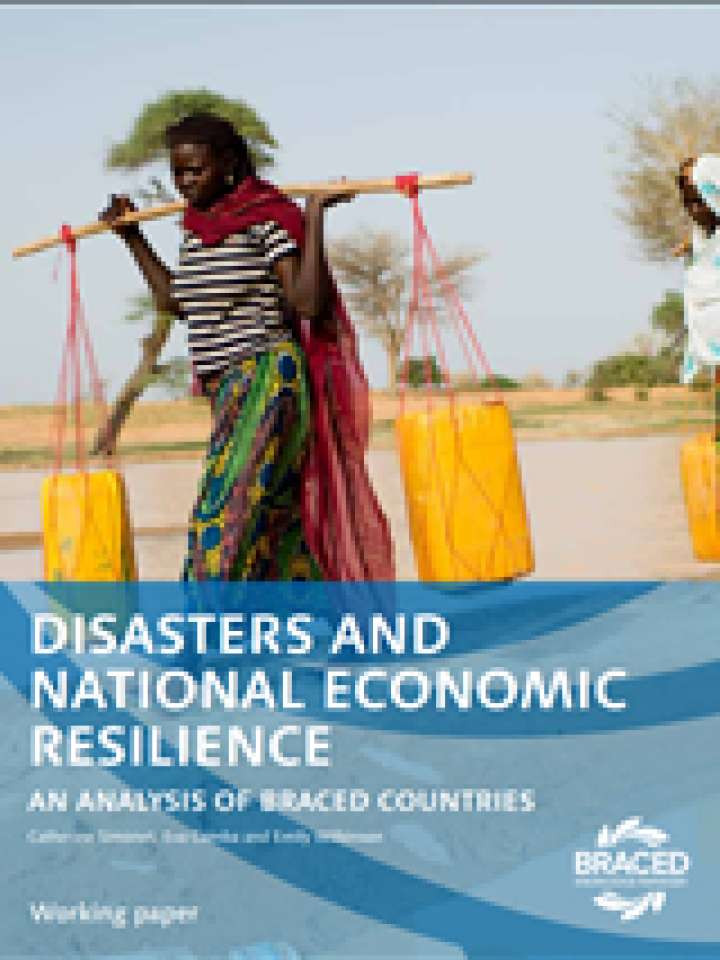Disasters and national economic resilience
This paper provides an analysis of economic resilience at the national level, presenting a broad picture of changes in resilience to climate extremes over a 42 year period. It focuses on 12 countries in the Sahel, East Africa and Asia that are part of the UK Government funded resilience programme BRACED (Building Resilience and Adaptation to Climate Extremes and Disasters).
In this paper, authors create a typology of risk for countries that can be used to inform approaches to building resilience. Burkina Faso and Mali, for example, have a ‘mono-risk’ profile as they have experienced relatively few events, whereas Nepal has a ‘multi-risk’ profile and has experienced various disasters over the 42 year period analysed. Meanwhile, droughts have had a disproportionate effect compared with other climate-related
hazards, especially in Africa, whereas floods have been very frequent.
This paper looks at how the national economies of different sets of developing countries are affected by disasters and have been able to ‘bounce back’ afterwards. The findings confirm a negative significant effect of disasters on economic growth: a climate event that affects 1% of the population contributes to a reduction in gross domestic product of 0.05% on average. In particular, the negative effects of climate-induced events are highly significant and important in landlocked countries. More specifically, shocks seem to be absorbed one year following a disaster, but there is a negative impact on economic growth three years following a disaster.
